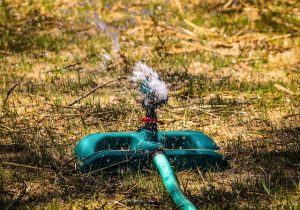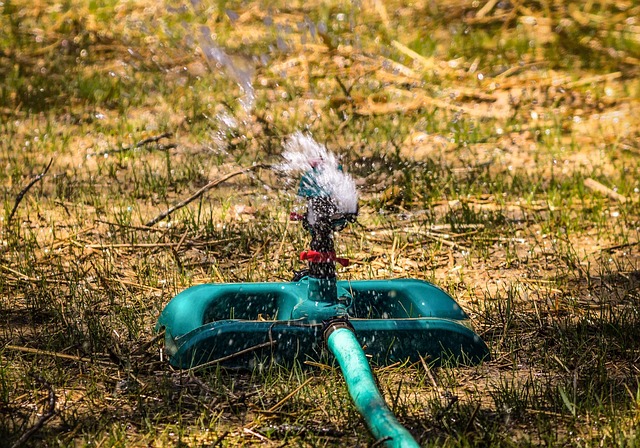How to Care for New Turf? 6 weeks routine
Imagine stepping barefoot onto a lush, emerald carpet that seems to stretch endlessly beneath your feet, a canvas of vibrant green promising comfort and beauty. This is the allure of new turf, a living work of art that transforms your outdoor space into a sanctuary of serenity.
However, like any masterpiece, it requires care, attention, and a touch of expertise to maintain its brilliance. In this guide, we’ll unveil the secrets to nurturing your new turf, ensuring it thrives and captivates, a testament to your commitment to nature’s elegance in your backyard.
Dive into the art of turf care, and let the journey to a picture-perfect lawn begin.
How to Care for New Turf?
To care for new turf, water it daily for the first 4-6 weeks after installation, ensuring that the soil remains consistently moist. It’s essential to keep the turf wet during this initial period to encourage healthy root growth and establishment.

6 Weeks Routine for New Turf:
Caring for new turf during the first 6 weeks is crucial to ensure it establishes strong roots and thrives. Here’s a routine to follow during this period. The routine will be different as the climate of that area vary
Week 1:
Watering:
Water the turf daily to keep the soil consistently moist but not soggy. Early morning or late afternoon is the best time for watering.
No Foot Traffic:
Avoid walking on the new turf during the first week to prevent compacting the soil and damaging the delicate grass.

Week 2-3:
Watering:
Continue daily watering. As the turf begins to establish roots, you can gradually reduce the frequency to every other day, depending on weather conditions.
Mowing:
If the grass has reached the recommended mowing height for your turf type (usually 2-3 inches), you can perform the first mow. Ensure the mower blades are sharp, and only remove one-third of the grass height.
Week 4-6:
Watering:
Transition to a regular watering schedule of 2-3 times per week, providing deep watering sessions. Monitor the soil moisture to prevent it from drying out completely.
Fertilizing:
Around week 6, consider applying a balanced, slow-release fertilizer specifically designed for new turf. Follow the manufacturer’s instructions for application.
Gradual Use:
You can slowly introduce light foot traffic to the lawn, but avoid heavy use or any activities that might stress the grass during this period.
By following this 6-week routine, you’ll give your new turf the best chance to establish strong roots and develop into a healthy, vibrant lawn. After this initial period, continue with regular lawn care practices to maintain its beauty and health.
Mowing a new lawn:
When can I mow a new lawn?
You can typically mow a new lawn once the grass reaches a recommended mowing height, which is usually about 2-3 inches for most turf varieties. This may occur 2-3 weeks after installation, but it’s crucial to check the specific guidelines provided by your turf supplier or landscaper.
How do I Mow New Turf?
When mowing new turf, follow these steps:
- Ensure the grass is dry to prevent clumping and damage.
- Set your mower blades to the recommended height (usually 2-3 inches).
- Avoid cutting more than one-third of the grass height in a single mowing session.
- Use a sharp mower blade to achieve clean cuts and minimize stress on the grass.
- Collect and dispose of any clippings to prevent smothering the new turf.
- Mow in different directions each time to encourage even growth and prevent compaction.
- Remember that proper mowing practices are essential to maintain a healthy and vibrant new lawn.
Fertilizing a New lawn?
How do I fertilize a new turf?
Fertilizing a New Lawn:
When fertilizing a new lawn, it’s essential to wait until the grass is well-established, typically around 6-8 weeks after installation. Choose a balanced, slow-release fertilizer with the appropriate nitrogen-phosphorus-potassium (N-P-K) ratio for your specific turf type.
Follow the recommended application rate on the product label, and water the lawn thoroughly after application to help nutrients penetrate the soil.
How do I fertilize the lawn once it is established?
Fertilizing an Established Lawn:
To fertilize an established lawn, apply fertilizer during the growing season, which varies depending on your grass type. For cool-season grasses, fertilize in the spring and fall when they are actively growing.
Warm-season grasses benefit from fertilization during their primary growing season, typically in late spring and summer. Use a broadcast or drop spreader for even distribution, and water the lawn after fertilizing to activate the nutrients. Avoid over-fertilizing, as it can harm your lawn and the environment.
How can I determine the right type of fertilizer for my specific lawn and soil conditions?
To choose the right fertilizer for your specific lawn and soil conditions, consider conducting a soil test. A soil test will analyze your soil’s nutrient levels and pH, helping you select the appropriate fertilizer blend. You can usually obtain a soil test kit from your local extension office or a garden centre.
Once you have the results, you can adjust the N-P-K ratio in your chosen fertilizer to address any deficiencies or imbalances in your soil. This tailored approach ensures that your lawn receives the nutrients it needs for optimal health while minimizing waste and environmental impact.
FAQs
When I can walk on new turf?
You can typically walk on new turf once it has taken root and is firmly established. This usually takes about 2-3 weeks after installation. To test if it’s ready, gently tug on a corner of the turf; if it resists being pulled up, it’s likely safe to walk on.
However, it’s best to consult with your turf provider or landscaper for specific recommendations based on your turf type and local conditions.
How often should I water my new turf?
Water your new turf daily for the first 2-3 weeks to keep the soil consistently moist. After that, transition to a 2-3 times per week watering schedule.
When should I mow my new lawn?
You can mow your new lawn when the grass reaches the recommended mowing height, typically 2-3 inches. This usually happens 2-3 weeks after installation.
What’s the best way to determine the right fertilizer for my new turf?
Consider conducting a soil test to analyze nutrient levels and pH. Based on the results, choose a fertilizer blend that addresses any deficiencies or imbalances in your soil.
How can I prevent weeds in my new turf?
Apply a pre-emergent herbicide before or shortly after turf installation to prevent weed seeds from germinating. Hand-pull any weeds that do appear, being careful not to disturb the new grass.
When should I consider aerating my new lawn?
Aerate your lawn if the soil becomes compacted or if water isn’t penetrating well. This is typically done in the fall or spring, not immediately after turf installation.
What should I do if I notice brown or bare spots on my new lawn?
Investigate the cause of the problem. It could be due to under-watering, disease, or other issues. Address the underlying problem and consider overseeding or patching if necessary.
Conclusion:
In conclusion, caring for new turf is a journey that combines patience, knowledge, and a dash of green-thumb enthusiasm. It’s a process that begins with the tender nurturing of a freshly laid carpet of grass, ensuring that it takes root and thrives.
As we’ve explored, this entails attentive watering, appropriate mowing, timely fertilization, and the occasional soil test to tailor your care routine to the specific needs of your lawn.
However, the rewards are more than worth the effort a lush, vibrant lawn that invites barefoot strolls and family gatherings, a canvas of nature’s artistry right in your backyard. So, embrace the art of turf care, and watch your outdoor oasis flourish into a living testament to your dedication to nature’s splendor.






